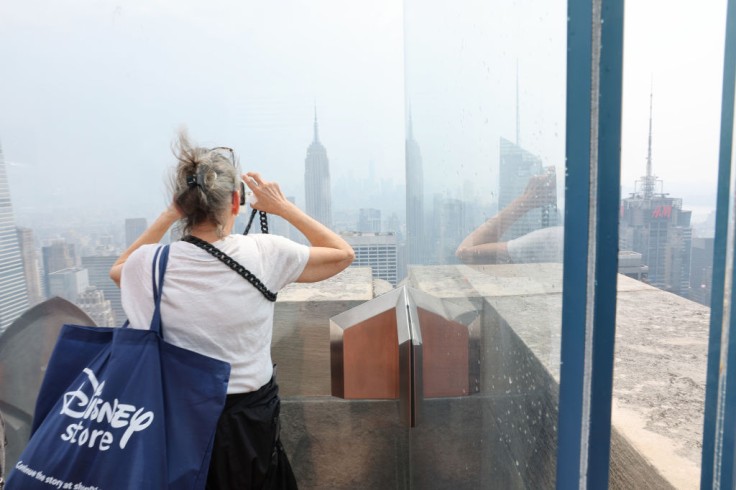
New York City is currently grappling with a severe air quality crisis. The city now ranks at the top of the list for the world's worst pollution, primarily caused by the influx of harmful smoke emanating from the raging wildfires in Quebec, Canada.
The hazardous smoke has blanketed the city, leading to concerns about the health implications for residents, particularly vulnerable groups such as the elderly, children, and those with respiratory issues.
Wildfire Smoke Engulfs New York City, Raising Alarms over Air Quality
According to the Associated Press, the dire situation in New York City has been exacerbated by the arrival of smoke from over a hundred wildfires blazing across Quebec.
With air quality indices soaring above 150, classified as "unhealthy" for sensitive groups, the pollution levels in the city have reached alarming levels. The smoke, containing tiny particulate matter known as PM2.5, poses severe health risks as it can penetrate deep into the lungs and even enter the bloodstream. Studies have linked PM2.5 to various respiratory illnesses, asthma, and heart diseases.
New York City's air quality index peaked above 150 on Tuesday, according to IQair, a level of pollution that is "unhealthy" for sensitive groups like the elderly, young children, and those with respiratory issues.
NBC News added that inhalation of such pollution can lead to inflammation and compromised immune system function, especially when minuscule particles infiltrate the respiratory system and enter the bloodstream.
The presence of wildfire smoke has been associated with a higher likelihood of respiratory ailments. Furthermore, instances of COVID-19 and influenza have shown a correlation with the occurrence of wildfire smoke.
It remained among the top five cities with the worst air pollution in the world, alongside Dhaka, Bangladesh; New Delhi, India; and Jakarta, Indonesia. The concentration of PM2.5 in New York City's air was more than 10 times the guideline set by the World Health Organization.
Impacted Areas and Precautionary Measures
As reported by CNN, as a consequence of the hazardous air quality, at least 10 school districts in central New York state have canceled outdoor activities and events. This includes academic, athletic, and extracurricular gatherings, with recess and gym classes also being suspended. The aim is to minimize exposure to polluted air, particularly for children and individuals with pre-existing respiratory or cardiovascular conditions.
Furthermore, cities such as Baltimore, Boston, Hartford, Providence, and Montpelier, Vermont, have also issued air quality alerts, cautioning residents, especially those belonging to sensitive groups, to limit prolonged outdoor activities. Chicago, Detroit, and Pittsburgh, have experienced worsening air quality conditions as well, with Detroit making it into IQair's top 10 worst locations for air pollution.
The adverse effects of the Canadian wildfires extend beyond New York City and its surrounding regions.
Air quality alerts were in effect across parts of the Northeast and Midwest as the smoke spread west into Detroit and Chicago. The National Weather Service in Chicago warned of elevated ozone and particulate levels, urging individuals with respiratory diseases such as asthma to limit outdoor activities.
These devastating wildfires and the resultant air pollution serve as a stark reminder of the adverse effects of climate change. The repercussions of these wildfires extend far beyond their immediate vicinity, as smoke travels thousands of miles, endangering millions more lives.
Efforts to combat air pollution caused by wildfires and other sources have gained momentum, with environmental organizations, such as the American Lung Association, emphasizing the importance of minimizing exposure and closely monitoring one's health during such events.
Healthcare providers should be consulted promptly if any concerning symptoms develop.